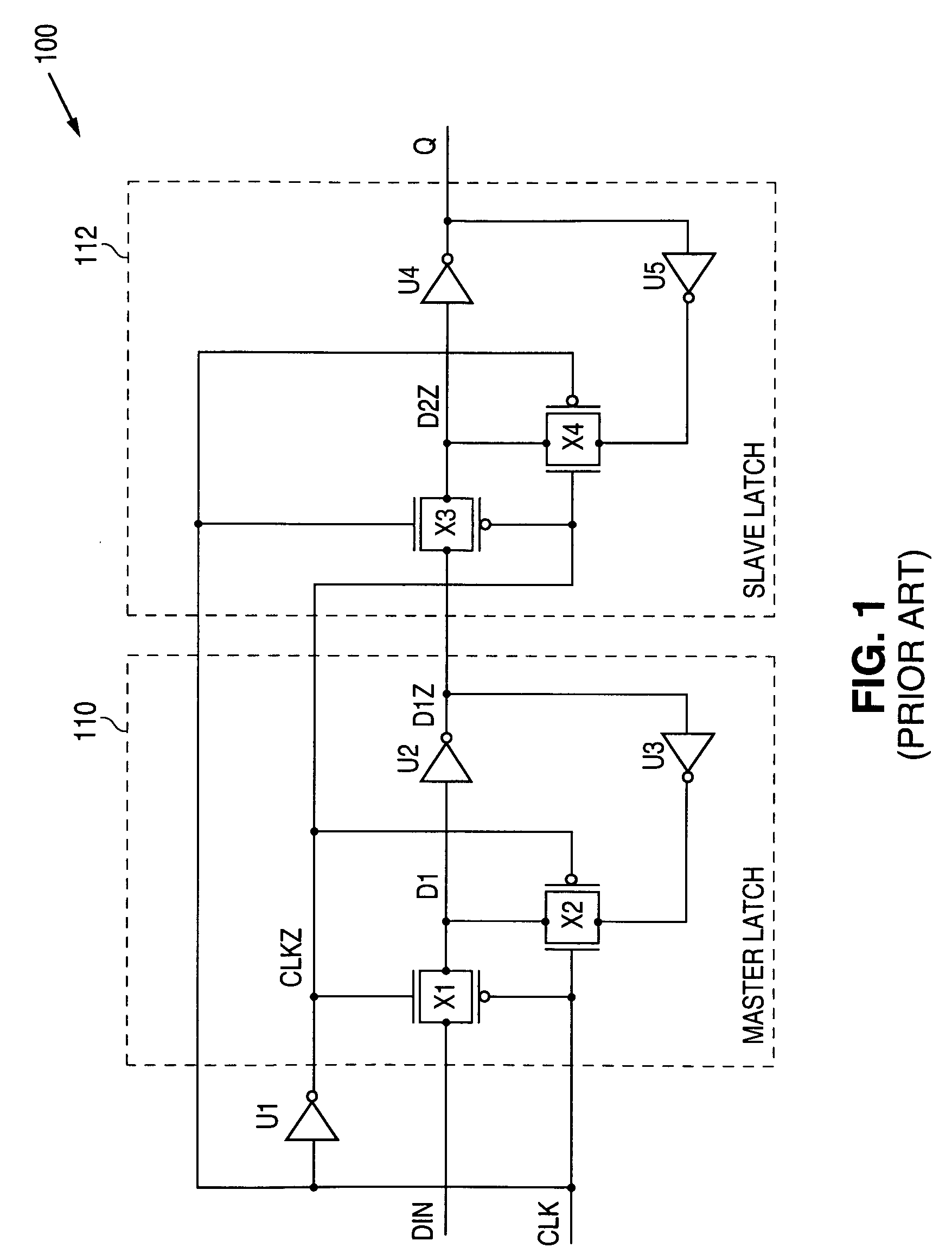Method of stitching scan flipflops together to form a scan chain with a reduced wire length
a technology of scan flipflops and scan chains, applied in pulse generators, pulse techniques, instruments, etc., can solve the problems of difficult to test scan flipflops, inability to easily test scan flipflops, and extremely complex logic functions of cmos chips
- Summary
- Abstract
- Description
- Claims
- Application Information
AI Technical Summary
Benefits of technology
Problems solved by technology
Method used
Image
Examples
Embodiment Construction
[0054]In accordance with the present invention, FIG. 7 shows a flow chart that illustrates an example of a method 700 of stitching scan flip-flops together. As described in greater detail below, the method of the present invention substantially improves the scan stitching order for the scan flipflops in a scan chain.
[0055]Before discussing method 700, the following terms are first defined. A netlist is a file that contains interconnect information for standard cells, and / or macro blocks, and / or I / O cells. A Verilog netlist is a netlist that is in Verilog format. A chip-level or top-level netlist is a netlist for an entire chip. The netlist can contain standard cells, macro blocks and I / O cells. An unstitched netlist is a netlist that contains scan flipflops whose SD and SE pins are not connected. A stitched netlist is a netlist that contains scan flipflops whose SD and SE pins are connected.
[0056]A D flipflop is a flipflop that does not contain SD and SE scan pins. A scan flipflop i...
PUM
 Login to View More
Login to View More Abstract
Description
Claims
Application Information
 Login to View More
Login to View More - R&D
- Intellectual Property
- Life Sciences
- Materials
- Tech Scout
- Unparalleled Data Quality
- Higher Quality Content
- 60% Fewer Hallucinations
Browse by: Latest US Patents, China's latest patents, Technical Efficacy Thesaurus, Application Domain, Technology Topic, Popular Technical Reports.
© 2025 PatSnap. All rights reserved.Legal|Privacy policy|Modern Slavery Act Transparency Statement|Sitemap|About US| Contact US: help@patsnap.com



